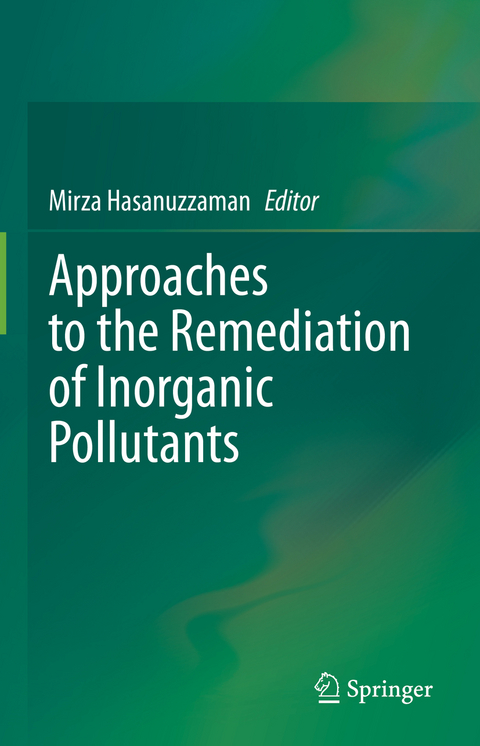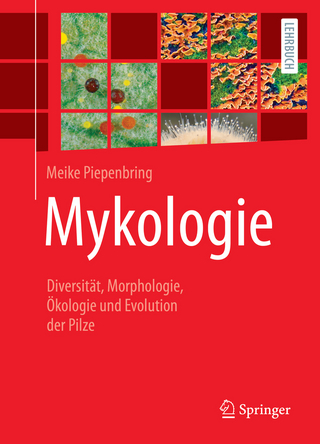
Approaches to the Remediation of Inorganic Pollutants
Springer Verlag, Singapore
978-981-15-6220-4 (ISBN)
Dr. Mirza Hasanuzzaman is a Professor of Agronomy at Sher-e-Bangla Agricultural University, Dhaka, Bangladesh. He received his PhD on ‘Plant Stress Physiology and Antioxidant Metabolism’ from the United Graduate School of Agricultural Sciences, Ehime University, Japan with a Japanese Government (MEXT) scholarship. Later, he completed his postdoctoral research at the Center of Molecular Biosciences (COMB), University of the Ryukyus, Okinawa, Japan on a Japan Society for the Promotion of Science (JSPS) postdoctoral fellowship. Subsequently, he served as an Adjunct Senior Researcher at the University of Tasmania on an Endeavour Research Fellowship from the Australian Government. Prof. Hasanuzzaman has been engaged in research in the field of Crop Science, especially focusing on Environmental Stress Physiology, since 2004. He has published over 100 articles in peer-reviewed journals and books, edited 13 books and written 35 book chapters on various aspects of plant physiology, plant stress responses, and environmental problems in relation to plant species. He is an Editor or Reviewer for more than 50 peer-reviewed international journals and received the Publons Global Peer Review Award in 2017, 2018 and 2019. He has been honored for his outstanding performance in different fields like research and education by various authorities and received e.g. the World Academy of Science (TWAS) Young Scientist Award in 2014.
Chapter 1. Ion homeostasis and its role in salt remediation by halophytes.- Chapter 2. Role of Transporters in Accumulating Salt Ions by Halophytes.- Chapter 3. Dual Role of Nitrogen: Essential Plant Mineral Element and Source of Inorganic Pollution.- Chapter 4. Synthesis and regulation of secondary metabolites in plants in conferring tolerance to toxic metals and inorganic pollutants.- Chapter 5. Bicarbonate toxicity and elevated pH in plants: Metabolism, regulation and tolerance.- Chapter 6. Antioxidant defense systems and remediation of metal toxicity in plants.- Chapter 7. Current Research on the Role of Plant Primary and Secondary Metabolites in Response to Cadmium Stress.- Chapter 8. The current scenario and prospects of immobilization remediation technique for the management of heavy metals contaminated soils.- Chapter 9. Inhibition of donor and acceptor side of Photosystem II by cadmium ions.- Chapter 10. Physiological and Molecular Mechanism of Metalloid Tolerance in Plants.- Chapter 11. Heavy metals-induced morphophysiological and biochemical changes in Mentha piperita L..- Chapter 12. Heavy Metals-induced Physiological and Biochemical changes in Fenugreek (Trigonella foenum-graceum L.).- Chapter 13. Copper-induced responses in different plant species.- Chapter 14. Concept and types of phytoremediation.- Chapter 15. Bioremediation of Heavy Metals Using the Symbiosis Between Leguminous Plants and Genetically Engineered Rhizobia.- Chapter 16. Metallothionein- and Phytochelatin-assisted mechanism of heavy metal detoxification in microalgae.- Chapter 17. Efficacy of Duckweeds for phytoremediation: Morpho-physiological and biochemical alterations.- Chapter 18. Metals Phytoextraction by Brassica species.- Chapter 19. Molecular Basis of Plant-Microbes Interaction in Remediating Metals and Inorganic Pollutants.
| Erscheinungsdatum | 24.02.2021 |
|---|---|
| Zusatzinfo | 30 Illustrations, color; 4 Illustrations, black and white; XIX, 403 p. 34 illus., 30 illus. in color. |
| Verlagsort | Singapore |
| Sprache | englisch |
| Maße | 155 x 235 mm |
| Themenwelt | Naturwissenschaften ► Biologie ► Botanik |
| Technik ► Umwelttechnik / Biotechnologie | |
| Schlagworte | Environmental Contaminants • Heavy metals • Metalloids • Phytoremediation • Soil Pollution |
| ISBN-10 | 981-15-6220-2 / 9811562202 |
| ISBN-13 | 978-981-15-6220-4 / 9789811562204 |
| Zustand | Neuware |
| Informationen gemäß Produktsicherheitsverordnung (GPSR) | |
| Haben Sie eine Frage zum Produkt? |
aus dem Bereich


